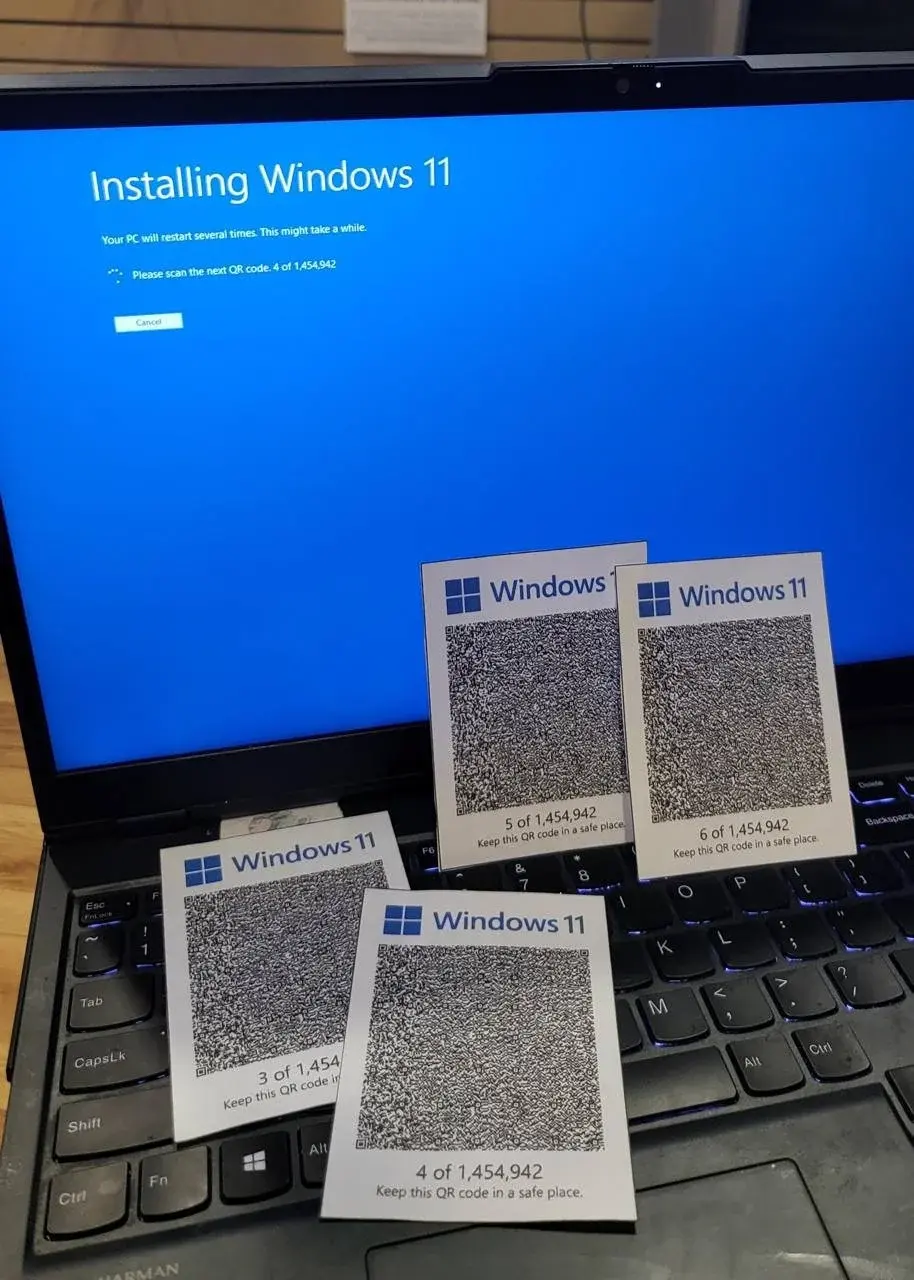this post was submitted on 27 Aug 2024
539 points (99.4% liked)
196
16359 readers
2334 users here now
Be sure to follow the rule before you head out.
Rule: You must post before you leave.
founded 1 year ago
MODERATORS
you are viewing a single comment's thread
view the rest of the comments
view the rest of the comments

For those wondering, when using the biggest QR code with the maximum error correction (10,208 bytes), 1,454,942 QR codes is slightly less than 14GiB, which should be more than enough for a Windows ISO.
My math:
(1454942×10208)÷1024÷1024÷1024≈13.83Edit: Damn another guy beat me to it, now I wonder how I'm so far off.
Because the other comment had a ~~useless~~ counterproductive step in it, namely base64.
Maybe, but also I think I was looking at the raw 'data bits', not 'binary' data. It's actually almost exactly 4GiB, even when dropping down to minimum error correction (1.7 GiB otherwise).
(1454942×2953)÷1024÷1024÷1024≈4.00Edit: So if alphanumeric mode could store lowercase letters, base64 would've stored more.